A Q&A with picture book creator Anka Schwelgin
by Jo Shallow, Quentin Blake Centre team
We talk to Anka Schwelgin, an author and illustrator whose work fuses her passions for storytelling and environmental protection. The idea for her latest picture book The Recyclosaurus started life in one of our online courses.
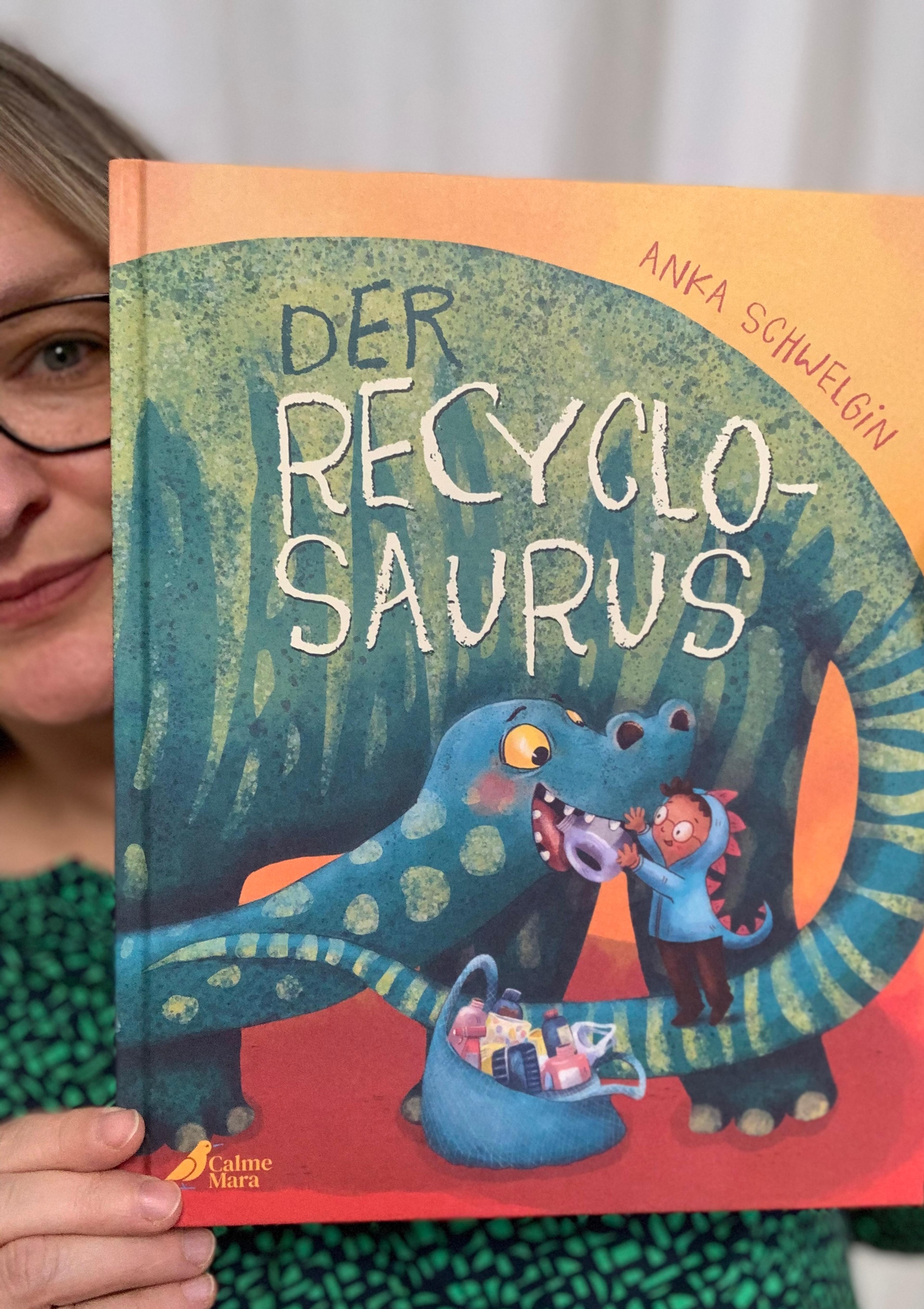
What drew you towards becoming an illustrator?
Like many children, I loved drawing. I was particularly fond of the illustrations in books and often tried to copy them. It never occurred to me that this could be a profession. Environmental protection has always been an important topic for me, so I studied environmental science after school. But my creativity never left me, and if I wasn't painting or writing, I was unhappy. At a certain point, I decided that this part of my life deserved more space. I reduced my working hours and devoted more time to painting and later to illustration. Storytelling through pictures was very exciting to me.
Who are some artists and illustrators that have influenced and inspired your work?
Fairytales played a particularly important role in my childhood. My mother read and drew pictures of fairy tales for me, which I coloured in.
I’m in love with fantasy stories and am influenced by the German author Micheal Ende, who is probably best known for his book The Neverending Story. I have vivid memories of Roald Dahl's stories from my childhood. I mainly read his books for adults and only got to know his children's stories much later. Jim Henson's worlds and characters also had a strong influence on me. I like picture book makers like Marta Altes, Jarvis and Nadia Shireen for their humour and the illustrators Emilia Dziubak, Jim Field and Wiebke Rauers. I am also very much in love with the poetic beauty of Briony May Smith's books.
How would you describe your work?
My style is whimsical, and I love to add humour into my drawings to bring smiles to people's faces.
I typically use a reduced colour palette but use bright colours in my illustrations. My favourite subjects to draw are animals and nature. Environmental protection plays an important role in my work.
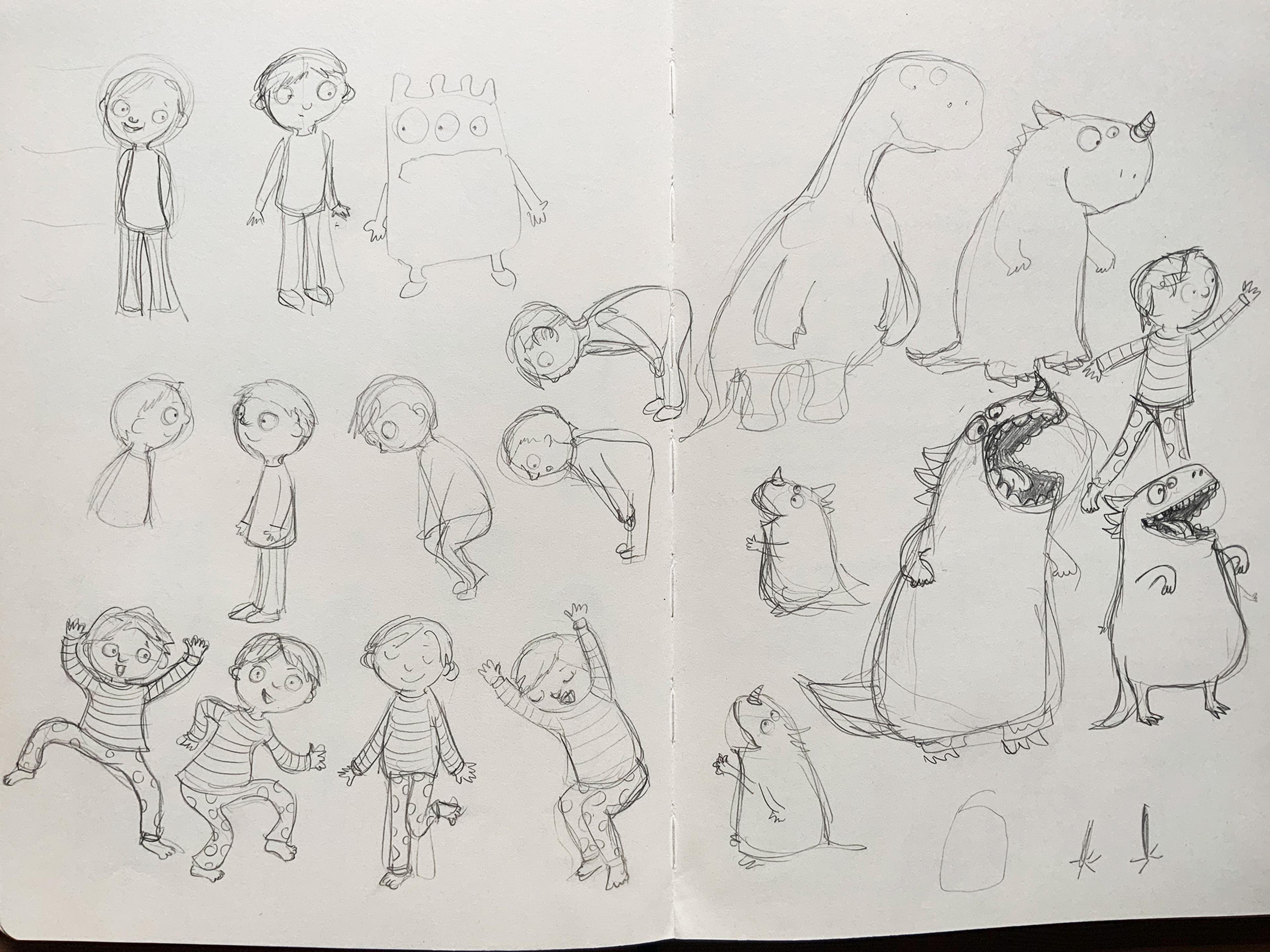
What kind of materials and methods do you use to create your illustrations?
At first, I mainly worked with watercolours, gouache and coloured pencils. When I started illustrating professionally, I switched to Photoshop, mainly because of its flexibility.
I currently work digitally with analogue structures that I scan and incorporate into the illustrations.
Since AI has developed so quickly and strongly, I´m thinking about integrating more analogue elements into my illustration process again.
You are a previous participant of our online course ‘Introduction to Creating Picture Books’. What made you sign-up for the course and how did you find the experience?
I wasn’t a complete beginner when I decided to enroll. I had found an agency, was illustrating a book and had even sold my first story to a publisher. However, I didn't fully trust my skills as a storyteller yet. As a career changer, I suffered from imposter syndrome for a long time. It seemed like a coincidence that I had sold this first story, especially considering I had previously written and offered a few stories that hadn't worked out.
After this initial success, I felt an urgent need to continue moving forward but couldn't decide which story to tackle next. I needed structure and support, recognising that there was still much for me to learn.
Claire's course was one of the best I've taken online. I particularly liked the manageable group size of 12 participants, which allowed for intensive support and individual feedback despite the online format.
The course was excellently structured, and I learned new techniques that have proven effective for me to this day. I also gained a better understanding of how the market works and what is in demand. Claire is a great teacher.
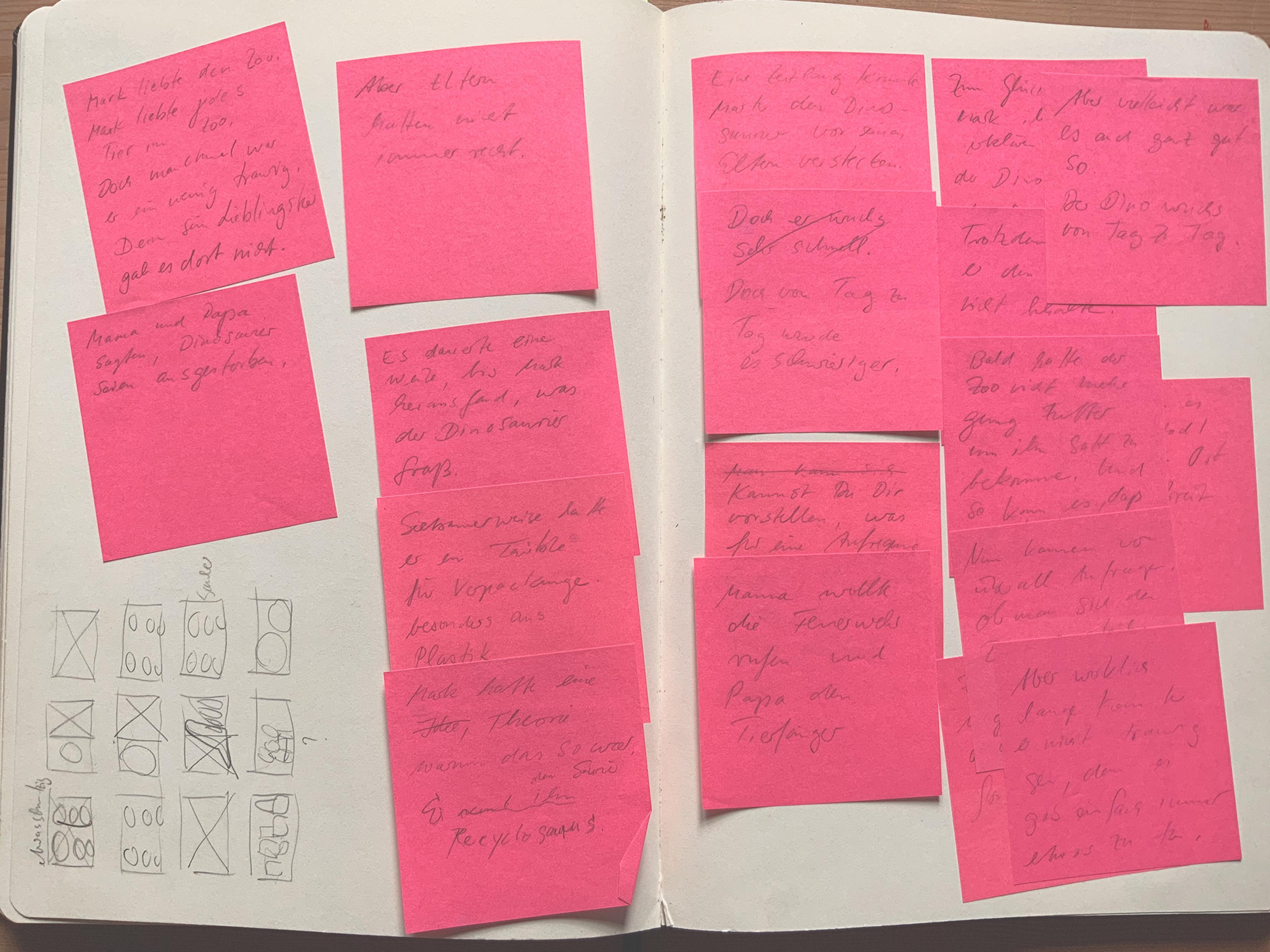
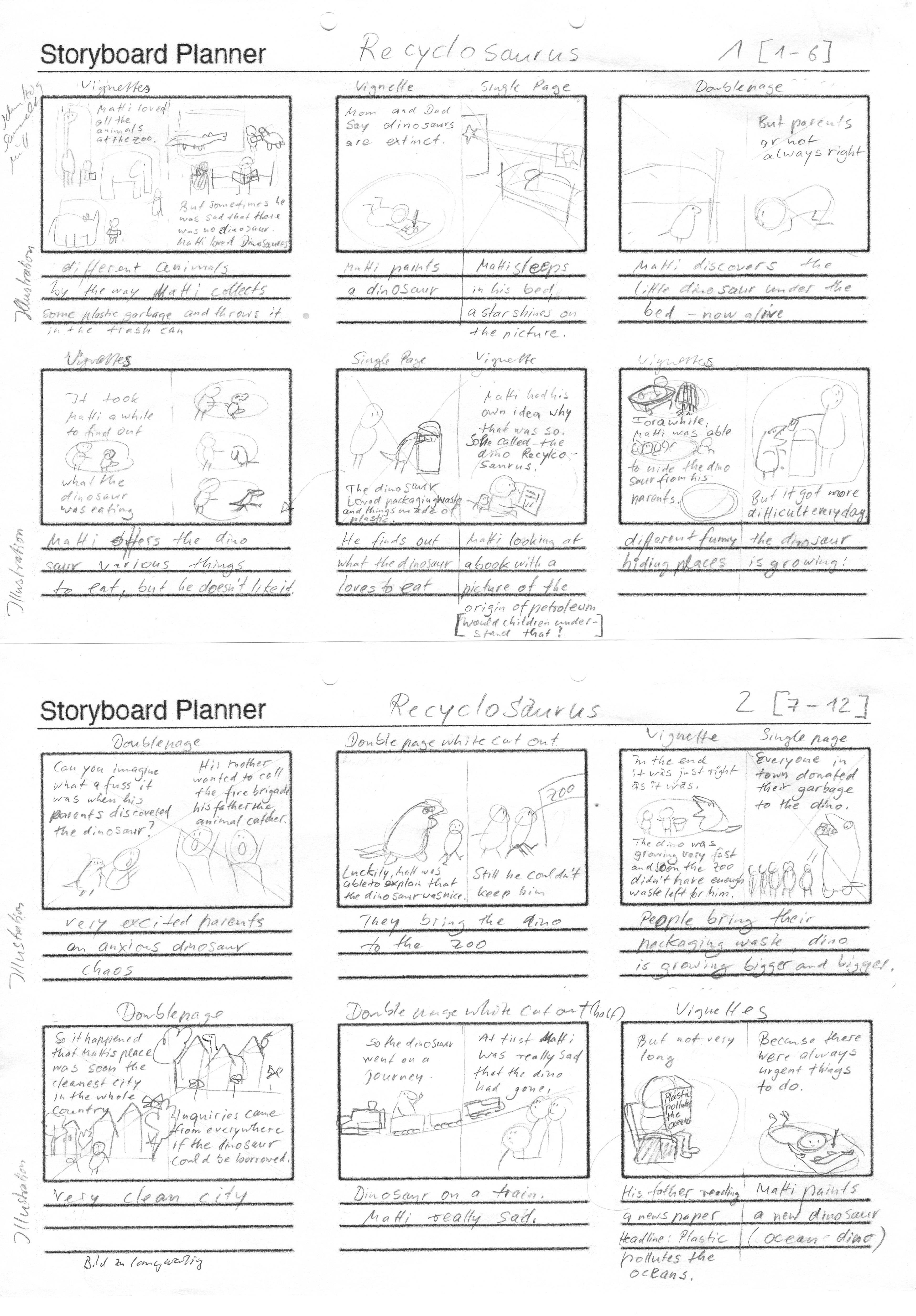
What advice do you have for anyone who is thinking of taking the course?
If you are serious about making picture books, this course is the right investment and one of the best courses you can find online. You'll learn everything you need to know about picture book making. Whether you're a beginner or have already taken your first steps in the book industry, there's plenty to gain from this course.
You progress much faster if you learn from others rather than trying to figure everything out alone. I think making books is a very complex process that requires very different skills and it simply takes time to bring everything together.
You have since developed the work you started on the course into a children’s book published in English and German called The Recyclosaurus / Der Recyclosaurus.
What steps did you take after taking the course to develop your story and get published?
The story initially sat in my drawer for a good year. I hesitated, unsure if it was ready to be pitched to a publisher.
However, when I decided to go to the Frankfurt Book Fair in 2022 for the first post-pandemic, I thought about which of my stories I wanted to pitch there. The Recyclosaurus came to mind again. I liked the story, but also had some doubts.
I shared the results from the course with an illustrator friend, and she liked the idea and the story approach but made some suggestions of what I could work on.
I reworked the story multiple times, until it finally seemed to be a good fit. I designed illustrations for the characters and wrote a synopsis, which I then took to the book fair. An editor I knew immediately fell in love with the dinosaur, and the contract was signed just a few weeks later.


How would you describe The Recyclosaurus?
The Recyclosaurus is a cheerful and funny story with a meaningful message about plastic pollution.
The story is about a boy called Matti who loves dinosaurs. When one of his dinosaur drawings comes to life he suddenly has to hide a real dinosaur from his parents. It works quite well at first, but the dinosaur only eats plastic and grows incredibly quickly as it devours larger quantities of plastic waste. When Matti can no longer hide the dinosaur and it is relocated to an animal sanctuary, the rest of the world discovers the value of the dinosaurs' special ability. Matti is sad, but in the end, we see him drawing himself a new dinosaur, this time a marine dinosaur.
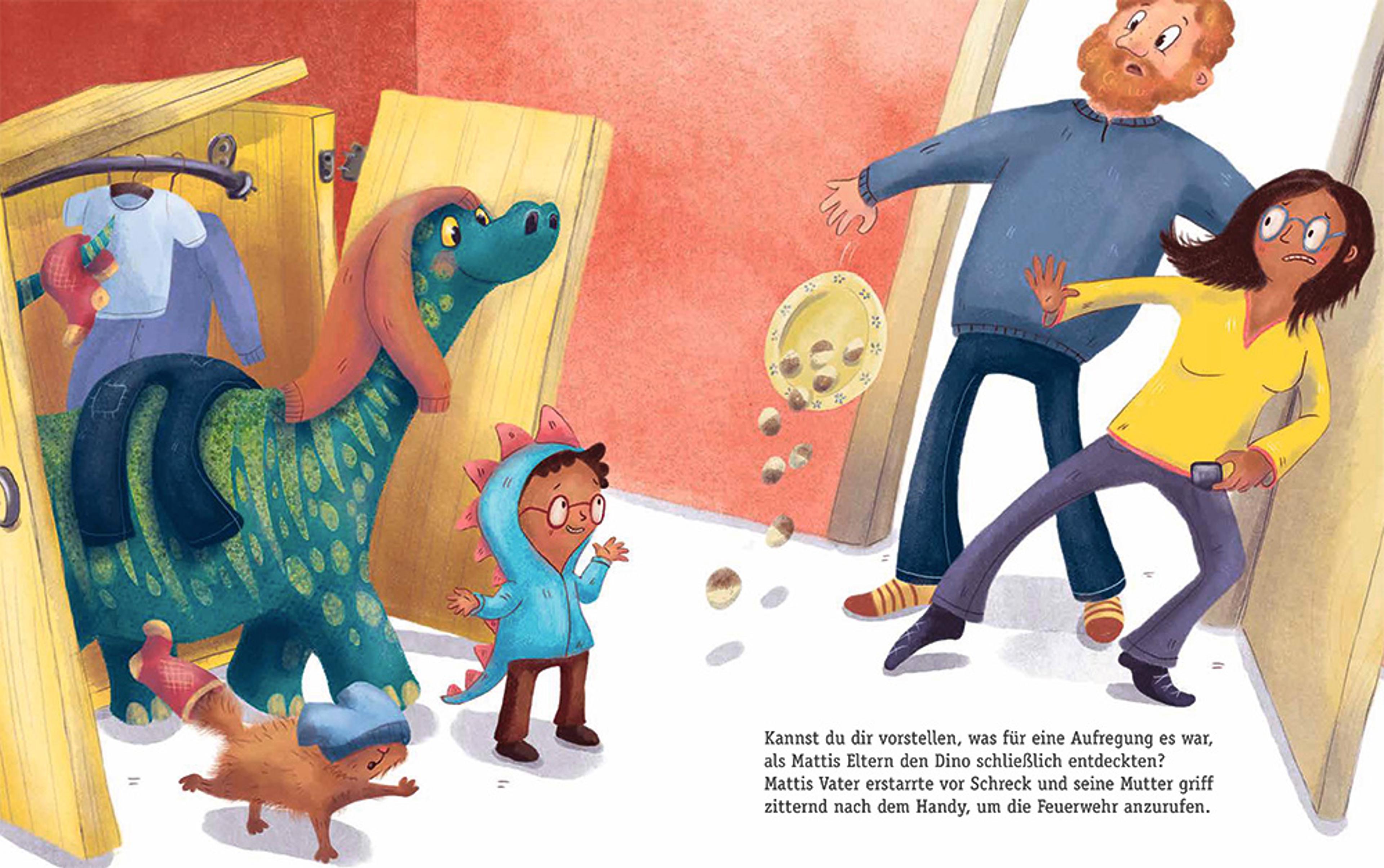
What advice would you give to an illustrator who hopes to write their own children’s picture book?
It takes a certain amount of time to develop all the different skills you need as a picture book maker. Often, your first attempt is not immediately successful, but I recommend continuing anyway and developing your skills with each new story.
If you're hoping to get published, it's very helpful to consider what topics are particularly in demand on the market.
In my experience, those who keep at it and work continuously towards their goal are the ones that make it in the end.
Good teachers definitely help to speed up the process and there are lots of good online resources that you can also use to help.
What are you working on next?
I am working on a Christmas book for Oetinger, a German publishing house and thinking about another picture book with an environmental theme.
Working on The Recyclosaurus has rekindled my childhood love of dinosaurs so I’m also writing read-aloud stories with dinosaurs and hope to find a publisher for them next year.
In future, I want to concentrate even more on my work as an author-illustrator.